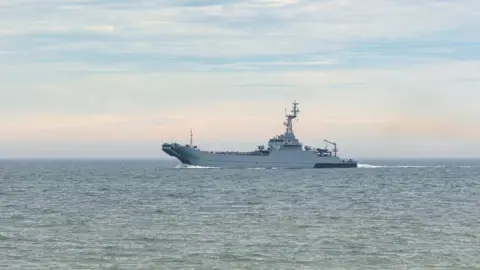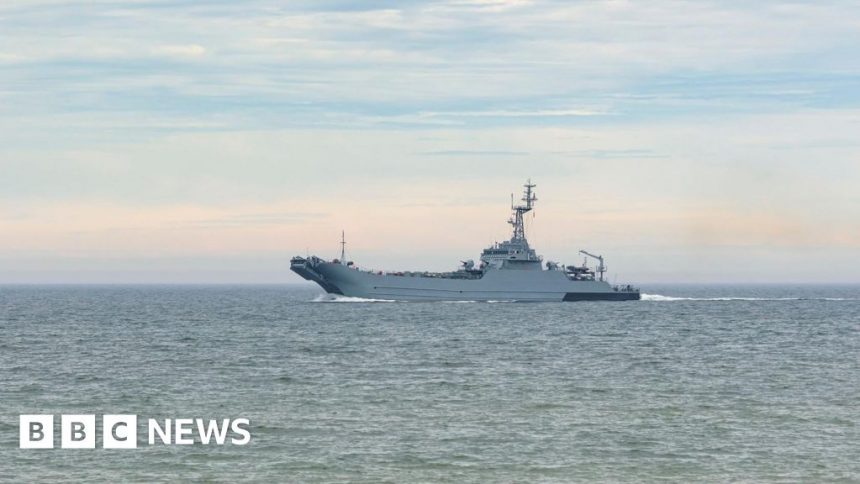Nato launches new mission to protect crucial undersea cables
 Getty Images
Getty ImagesNato has launched a new mission to increase the surveillance of ships in the Baltic Sea after critical undersea cables were damaged or severed last year.
Nato chief Mark Rutte said the mission, dubbed “Baltic Sentry”, would involve more patrol aircraft, warships and drones.
His announcement was made at a summit in Helsinki attended by all Nato countries perched on the Baltic Sea – Finland, Estonia, Denmark, Germany, Latvia, Lithuania, Poland and Sweden.
While Russia was not directly singled out as a culprit in the cable damage, Rutte said Nato would step up its monitoring of Moscow’s “shadow fleet” – ships without clear ownership that are used to carry embargoed oil products.
Tensions between Nato countries and Russia have been mounting relentlessly since Russia’s full-scale invasion of Ukraine in February 2022.
“There is reason for grave concern” over infrastructure damage, Rutte said. He added that Nato would respond to such accidents robustly, with more boarding of suspect vessels and, if necessary, their seizure.
He declined to share more details on the number of assets that will take part in the Baltic Sentry initiative, as he said this could change regularly and that he did not wish to make “the enemy any wiser than he or she is already”.
Undersea infrastructure is essential not only for electricity supply but also because more than 95% of internet traffic is secured via undersea cables, Rutte said, adding that “1.3 million kilometres (800,000 miles) of cables guarantee an estimated 10 trillion-dollar worth of financial transactions every day”.
In a post on X, he said Nato would do “what it takes to ensure the safety and security of our critical infrastructure and all that we hold dear”.
There has been an uptick in unexplained damage to undersea infrastructure in the Baltic in recent months.
The most recent accident to undersea infrastructure saw an electricity cable running between Finland and Estonia be cut in late December.
Finnish coast guard crew boarded the oil tanker Eagle S – which was sailing under a Cook Islands flag – and steered it into Finnish waters, while Estonia deployed a patrol ship to protect its undersea power cable.
On Monday, Risto Lohi of Finland’s National Bureau of Investigation told Reuters that the Eagle S was threatening to cut a second power cable and a gas pipe between Finland and Estonia at the time it was seized.
Estonia’s Foreign Minister Margus Tsahkna said in December that damage to submarine infrastructure had become “so frequent” that it cast doubt on the idea the damage could be considered “accidental” or “merely poor seamanship”.
Tsahkna did not accuse Russia directly. Neither did Swedish Prime Minister Ulf Kristersson, who on Sunday said that while Sweden was not jumping to conclusions or “accusing anyone of sabotage without very strong reasons”, it was also “not naive”.
“The security situation and the fact that strange things happen time and time again in the Baltic Sea also lead us to believe that hostile intent cannot be ruled out.”
“There is little evidence that a ship would accidentally and without noticing it… without understanding that it could cause damage,” he said.








